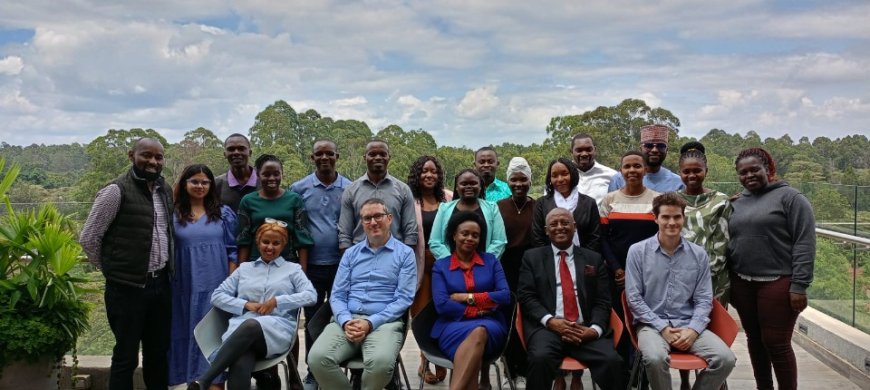Rising Threats for Environmental Journalists: Call for Global Action to Safeguard Press Freedom.

By Sharon Ambani
Environmental crime reporting is increasingly becoming a risky venture if recent statistics are anything to go by.
According to the New York-based Committee to Protect Journalists (CPJ), over thirty environmental journalists have been killed since 2009.
The most recent memorable case occurred in 2022 when British journalist Dom Phillips was killed alongside local indigenous expert Bruno Pereira. They were working on an exposé about sustainable development in Brazil’s Amazon region.
The increased violence towards journalists is mostly recorded in countries that are characterized by repressive regimes. A tally by Reporters Without Borders reveals that nine out of ten environmental journalists murdered between the years 2015 to 2020 were from Colombia (2), Mexico (1), the Philippines (1), Myanmar (1) and India (4).
Scores of others face violence, intimidation, imprisonment and life threats for investigating environmental issues.
In Africa, a report from Amnesty International reveals that environmental journalists in Congo and Ethiopia face a higher risk of arrest and imprisonment for reporting on atrocities against the ecosystem. In 2022 alone, at least 124 cases of attacks were recorded in the Democratic Republic of Congo, where one journalist was killed, two were abducted, 37 journalists were arrested, 18 others were physically assaulted, 17 media organizations or programmes were suspended, and 12 journalists currently being detained by authorities across the country. On the other hand, 29 environmental journalists in Ethiopia are on trial.
The statistics on the oppression of environmental journalists may not be conclusive. Many other cases go undocumented. In Kenya for example, apart from Arshad Sharif, a Pakistan Journalist killed last year in Kajiado, whose case turned out to be a political assassination, there is little record about these attacks.
Nonetheless, the risk of venturing into ‘protected’ conservation areas for environmental stories lingers on.
Kenyan journalist Victor Moturi recalls a situation where he pursued an environmental story but was confronted by an influential individual, who warned him to choose between the exposé and his life.
“I have been forced to drop some stories after receiving death threats from individuals fearing the exposure would affect their interests,” recalls Moturi.
He is among the many journalists who have been silenced in their line of duty with most of them not getting the justice they deserve.
A UNESCO observatory of killed journalists since 1993 reveals that nine out of ten cases of attacks against journalists end up unsolved. This creates fear impeding investigative environmental reporting.
This alarming trend highlights the dangers encountered by those who strive to raise awareness concerning environmental matters in recent years, indicating it is a perilous beat second to wartime reporting.
Beyond security risks, journalists covering this beat have also complained of difficulty in accessing up-to-date information from actors.
“Good environmental stories need data to describe the extent of an impact. However it is very difficult and complicated to get this information from government and non-government actors, especially for stories that expose negligence and corruption,” says Jennifer Gila, an environmental reporter working for The Guardian Newspaper in Tanzania.
Speaking in Nairobi during a Workshop for African Journalists on reporting on the circular economy, Lidya Gachungi, the regional adviser on freedom of expression and safety of journalists at UNESCO is saddened by the ever-increasing number of journalists facing challenges when covering such thematic areas.

Lidya Gachungi, photo Sharon Ambani
“It is worrying that journalists reporting on the environment, especially climate change, continue to face countless challenges yet they play a significant role in pushing for sustainable development,” said Gachungi.
Her sentiments were concurred by Professor Seyoum Leta from the University of Addis Ababa Centre of Environmental Science, who says that environmental reporters are essential connectors between the general public and experts.
“Every day, scientists are generating new knowledge that gives insight into emerging environmental issues such as the adverse impacts of climate change. Reporting evidence-based science stories is an integral part of increasing the public’s understanding of this knowledge. With rising environmental problems worldwide exacerbated by the adverse effects of climate change, the role of an environmental journalist is vital, hence the need to protect them,”
He also adds that journalists help to keep various stakeholders on their toes to carry through their diligence in attaining sustainable development while protecting the ecosystem.
However, the anticipated goal of raising adequate public awareness of environmental issues through these communication mediums is yet to be fully achieved due to the multiple obstacles confronting these professionals.
Governments are called upon to put in place concrete measures aimed at ensuring security for journalists while allowing them to operate without fear.
For instance, the Constitution of Kenya 2010 under Articles 33 and 34 guarantees freedom of expression and independence of media respectively. In addition, the Access to Information Act 2016, Part II, Sec. 4 dictates that every citizen has the right of access to information held by (a)the State; and(b)another person and where that information is required for the exercise or protection of any right or fundamental freedom.
The law bars anyone from interfering with or controlling journalists who are mandated to give information that is of public concern, as long as the media adheres to the Code of Conduct. Enacting these laws will protect journalists from people who intend to harm them.
Despite having these laws, the injustice against environmental reporters continues to escalate due to lack of enforcement.
Gachungi, however, revealed that UNESCO is fighting for the rights of environmental journalists through a multi-sectoral approach that will ensure a safe working environment for the scribes.
“We promote security for journalists globally by convening all stakeholders including policymakers, the judiciary, system, policy enforcers, media bodies, journalists, human rights activists and the public, to raise awareness on the importance of protecting journalists against impunity,” she added.
Prof. Leta notes that the safety of environmental journalists can also be enhanced through training and capacity building, where journalists are provided with skills and knowledge on how to operate in risky environments.
Together with UNESCO, his institution is developing a handbook on Disaster and Disaster Risk Reduction for African Journalists and a Review of the Training Manual of Environmental Journalism. Implementation of safety protocols is among the subjects covered in the content.
The two documents, once launched, will equip environmental journalists with the right knowledge and skills to conduct their jobs.








